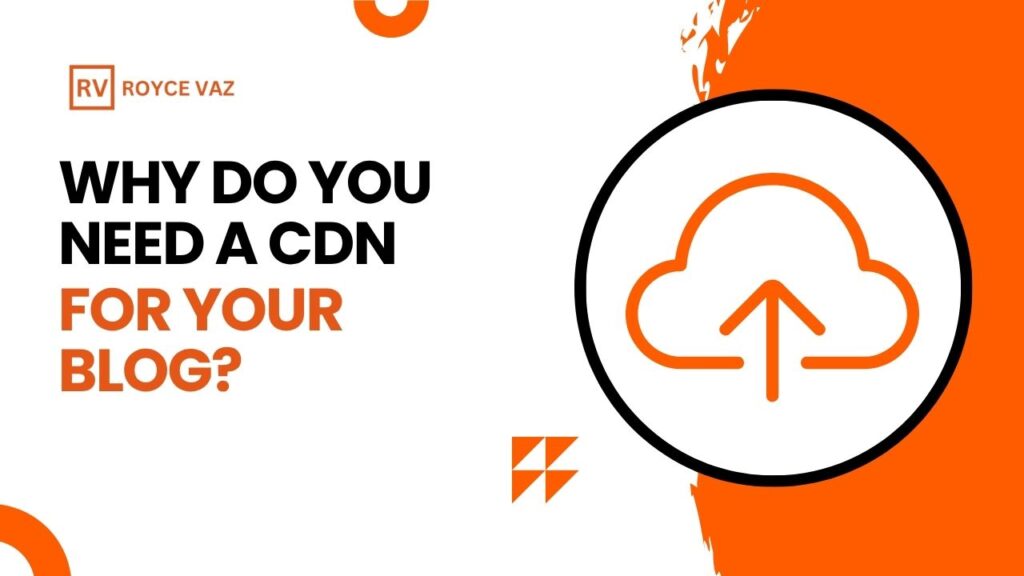If you’re running a WordPress blog and want it to load faster, handle more visitors, and stay secure, a Content Delivery Network (CDN) could be your secret weapon. CDNs have become essential for bloggers who want to deliver a seamless user experience and maintain strong SEO performance.
In this article, we’ll explain what a CDN is, why it’s important, and how it can benefit your WordPress blog.

What Is a Content Delivery Network(CDN)?
A Content Delivery Network (CDN) is a network of servers distributed across different geographic locations. Its main job is to deliver your website’s static content — like images, CSS, JavaScript, and videos — from the server that’s closest to your visitor.
Instead of relying on just your web host’s server (which might be located far from your audience), a CDN helps spread the load across multiple points worldwide. This reduces load times and improves user experience.
Benefits of Using a Content Delivery Network(CDN) for Your WordPress Blog
1. Faster Loading Times
Speed matters — for both users and search engines. A CDN reduces the physical distance between the user and your content, resulting in faster page loads.
For example, if your web host is in India and someone in the US accesses your blog, your Content Delivery Network will serve static assets from the nearest US-based server, cutting down on latency.
2. Improved SEO Rankings
Google uses page speed as a ranking factor. A faster website is more likely to rank higher in search results. Using a CDN helps you meet the technical SEO requirement of fast loading times, especially on mobile devices.
3. Better User Experience
Slow websites lead to high bounce rates. If your blog takes more than 3 seconds to load, visitors may leave before reading anything. A CDN ensures consistent performance, keeping users engaged and more likely to return.
4. Reduced Server Load
A CDN handles much of the traffic that would otherwise hit your origin server. This is especially helpful if you have spikes in traffic due to viral blog posts or seasonal trends.
By offloading the delivery of images, scripts, and videos, your hosting server can focus on serving dynamic content like blog comments or logged-in sessions.
5. Scalability During Traffic Surges
If one of your posts gets shared widely or ranks on Google Discover, your site could experience thousands of visitors at once. A Content Delivery Network helps absorb the impact of such surges by distributing traffic across multiple edge servers.
6. Increased Website Security
Many Content Delivery Network offer built-in security features like:
- DDoS protection
- Web Application Firewalls (WAF)
- TLS/SSL support
These features can protect your WordPress blog from brute-force attacks, spam, and malicious bots.
7. Global Reach
Even if your primary audience is local, global traffic can still trickle in. A Content Delivery Network helps ensure all visitors, no matter where they are, experience fast page loads and minimal lag.
How Does a CDN Work With WordPress?
CDNs don’t replace your hosting provider. Instead, they complement it by serving cached versions of your site’s static files.
Here’s how it works:
1. A visitor requests your blog post.
2. The CDN checks if it already has a cached version.
3. If yes, it serves the content from the nearest CDN server.
4. If not, it fetches it from your hosting server and caches it for next time.
Popular Content Delivery Network Services for WordPress
Here are some reliable CDN services that integrate well with WordPress:
- Cloudflare (free and premium plans)
- Bunny.net (affordable and developer-friendly)
- KeyCDN
- Stack Path
- Amazon CloudFront
- Jetpack CDN (for image optimization)
Many of these can be connected to your blog using WordPress plugins like W3 Total Cache, WP Rocket, or LiteSpeed Cache.
How to Add a CDN to Your WordPress Blog
1. Choose a CDN provider based on your budget and features.
2. Sign up and configure your Content Delivery Network account.
3. Integrate with WordPress using: A plugin. Manual setup via your hosting cPanel or DNS
4. Test your site to ensure it works correctly.
5. Clear your cache and use tools like GTmetrix or PageSpeed Insights to confirm performance improvements.
When You Might Not Need a CDN
While CDNs are helpful, they’re not always essential if:
Your audience is highly local (within one city or country)
You’re just starting out with low traffic
Your blog is very lightweight with few images or scripts
However, as your blog grows, a CDN will eventually become a necessity.
Final Thoughts
A Content Delivery Network is one of the smartest ways to improve your WordPress blog’s speed, security, and scalability. Whether you run a travel blog, tech site, or personal journal, integrating a CDN helps you deliver a faster and more reliable experience to every visitor — no matter where they are.
If you’re serious about blogging, investing in a CDN is a move that pays off in performance, user satisfaction, and long-term growth. You can contact me for WordPress website services.

